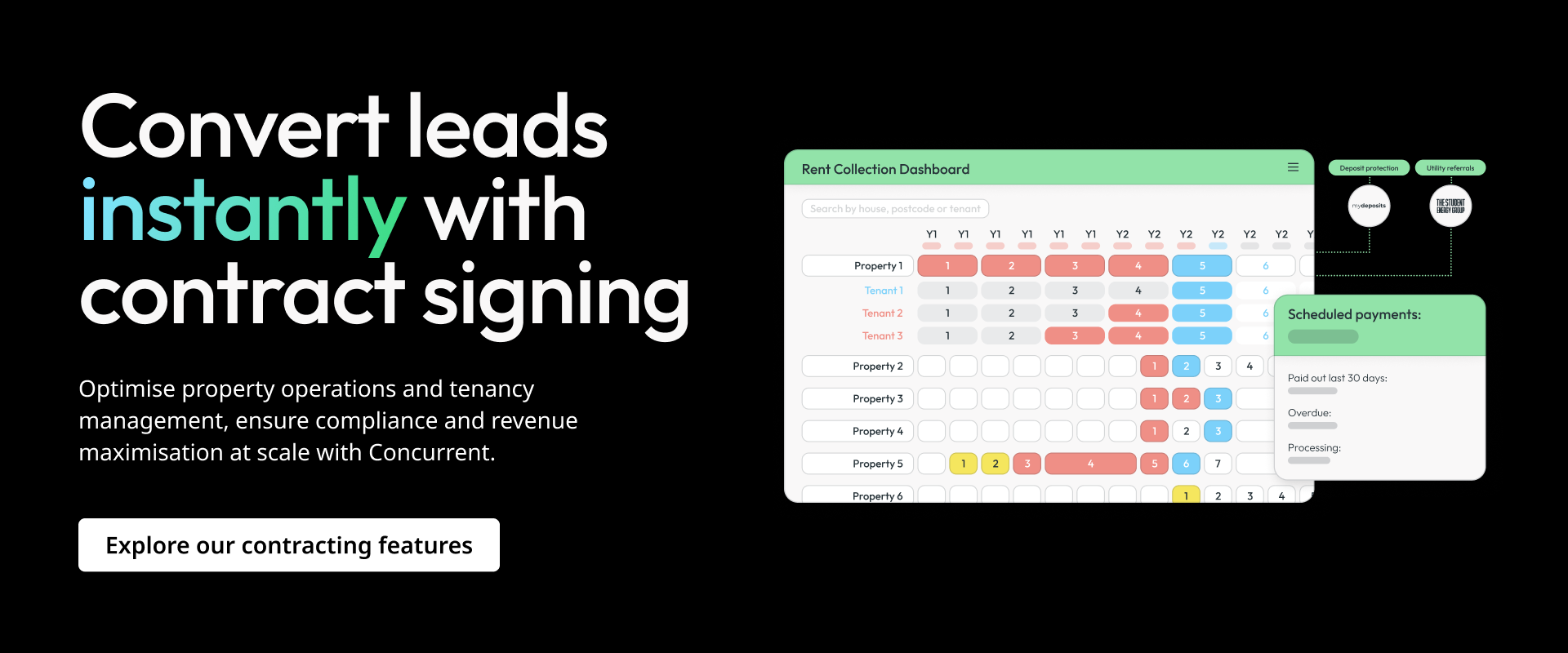
How to tackle outstanding payments before the end of tenancy

As the academic year wraps up, many student tenancies are approaching their end dates, and with them comes the need to chase outstanding rent.
Unpaid rent at the end of a tenancy can be a major issue for property managers, particularly if the tenant has already moved out. But there are steps you can take now to reduce the risk of arrears, protect your income, and close out contracts cleanly.
This guide breaks down how to manage student rent arrears effectively - before they become a bigger problem.
Step 1: Contact the tenant early
If rent is overdue, don’t wait. Reach out directly to the tenant as soon as a payment is missed.
- Start with a polite email or phone call to remind them of the missed payment
- Follow up with a formal letter if there’s still no response
- Keep a written record of all communications in case you need to escalate later
Remaining professional and empathetic in your communication can encourage cooperation and prevent the situation from deteriorating.
Step 2: Contact the guarantor
Most student tenants will have a UK-based guarantor. If you haven’t received payment within 14 days of the due date, contact the guarantor.
Make sure you:
- Outline the arrears amount
- Include the original rent due date
- Reference the guarantor’s legal responsibility to cover unpaid rent
Sending a clear, well-documented message to the guarantor often prompts faster resolution.
Step 3: Review the tenancy agreement
Before taking any further action, review the original tenancy agreement and guarantor agreement. Ensure that:
- The payment terms are clearly outlined
- The guarantor clause is valid and enforceable
- You’ve followed all agreed-upon processes
You’ll need this information to support any deductions from the deposit or legal claims.
Step 4: Consider the deposit
If there’s still outstanding rent by the time the tenancy ends, you may be able to recover some (or all) of the arrears from the tenancy deposit.
Make sure to:
- Refer to the deposit protection scheme’s guidelines
- Submit a breakdown of deductions with supporting evidence
- Communicate this to the tenant in writing within 10 days of the tenancy end
You must be able to justify the deduction, so detailed records and clear documentation are key.
Step 5: Maintain a full audit trail
Throughout the arrears process, make sure to keep:
- Copies of all tenant and guarantor communication
- Payment records
- Inspection reports (especially if tying arrears to property damage or misuse)
- Any invoices for cleaning, repairs, or professional services
This will support your case if you need to escalate the issue via dispute resolution or legal channels.
How Concurrent can help you reduce and manage arrears
Managing rent arrears manually is time-consuming, but Concurrent automates key parts of the process to save you time and recover more of what you’re owed.
Here’s how Concurrent helps:
- Automated Rent Reminders: Tenants receive reminders before each instalment is due, reducing the likelihood of missed payments.
- Real-Time Payment Tracking: View outstanding payments instantly and monitor who’s fallen behind.
- Guarantor Integration: Store guarantor contact details and agreement links alongside the tenancy for quick follow-up.
- Deposit Deductions Support: Keep detailed payment and communication records in one place to support any deposit deductions.
- Rent Refund Reports: Generate reports showing any arrears or overpayments at tenancy cancellation — no manual tracking needed.
Share


